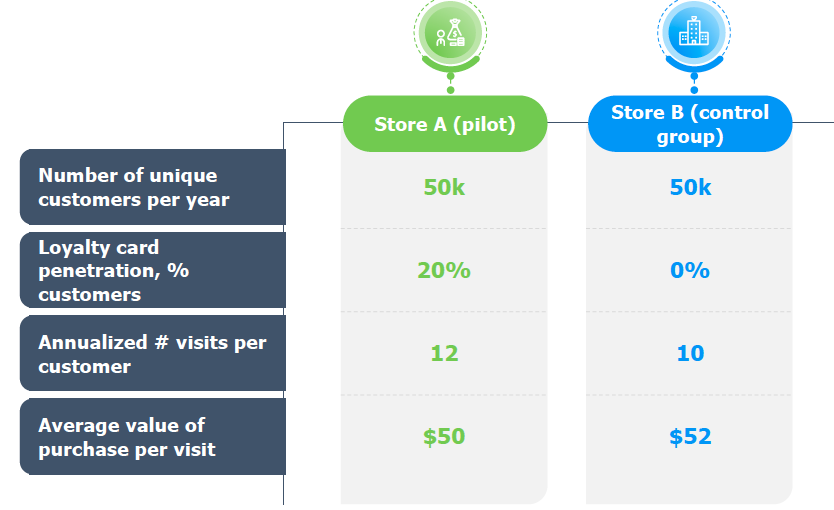Client has decided to launch loyalty program and wants to calculate what would be a 1-year break-even number of loyalty card members. Answer: 82k members. How do you get this answer? Do we need the control group data? Can't we just work with Store A data?
Profit margins:
– 19% for store A (pilot)

– 20% for store B (control group)
• Expenses on own loyalty card platform:
– $4M in capex to build
– $0.1M in annual opex



Why do you have to look at the difference between Store A and B's profit here? Can't we just apply the profit per customer for Store A since the loyalty program has been applied there? So X (# of customers ) x loyalty card penetration x visits per customer x spend per visit x profit margin of store A ...?
Because that gives you the profitability of the Store A (with the loyalty card), not the profitability of the loyalty card itself. If you do things the way you suggested you are assuming that Store A would have no sales without the credit card. Think about it this way. You have a Store with a certain profitability. You are wondering if you should introduce a loyalty card. So you introduce the credit card and look at total profitability. So what is the impact of the loyalty card? Is it a) the total profitability of the store? or b) the additional profit you make? The answer is b) as that's the profit that can be specifically attributed to the loyalty card.